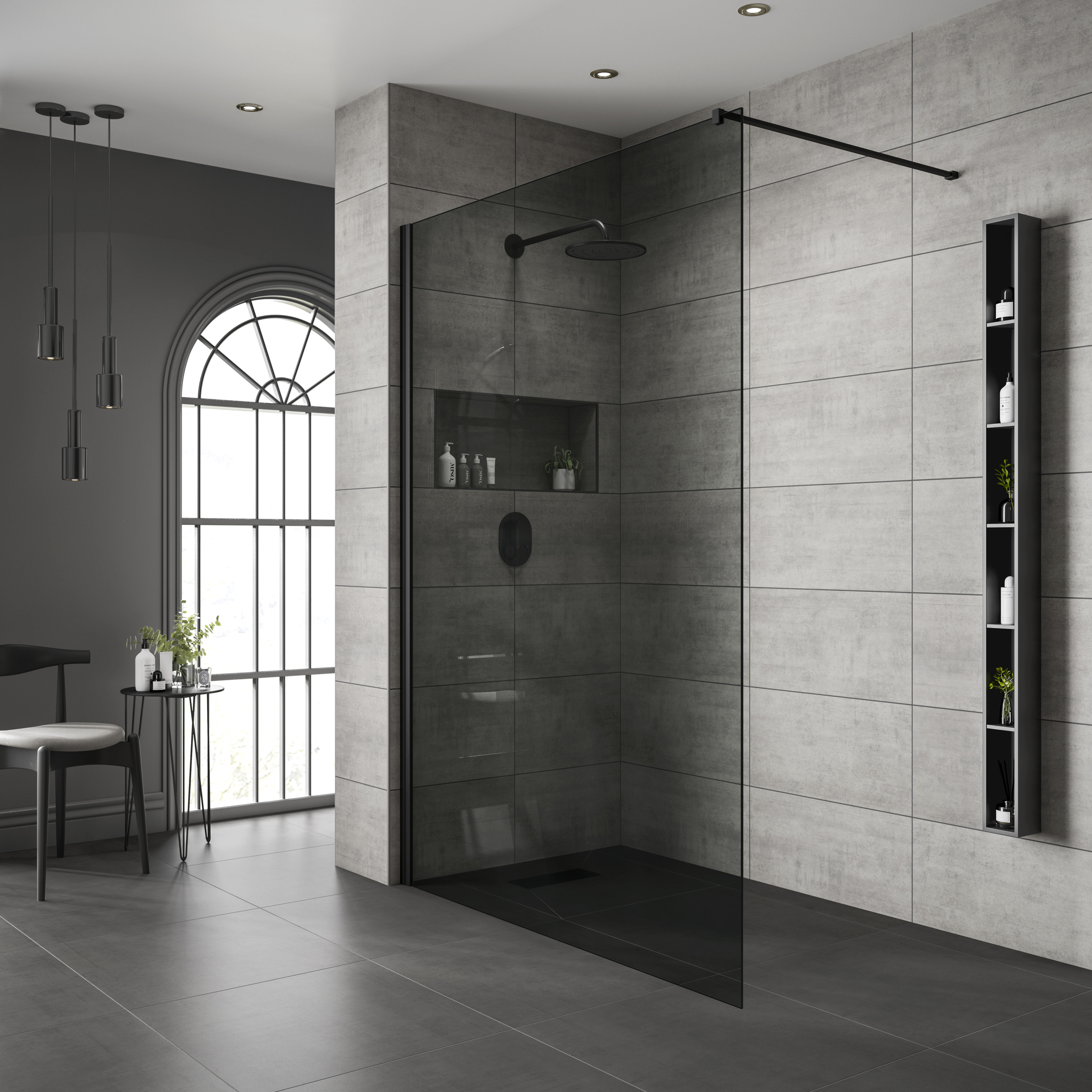Bathroom designers reveal whether a wet room or walk-in shower is best for your home
We asked bathroom experts how to decide between a wet room or walk-in shower, depending on your style, budget and everyday needs
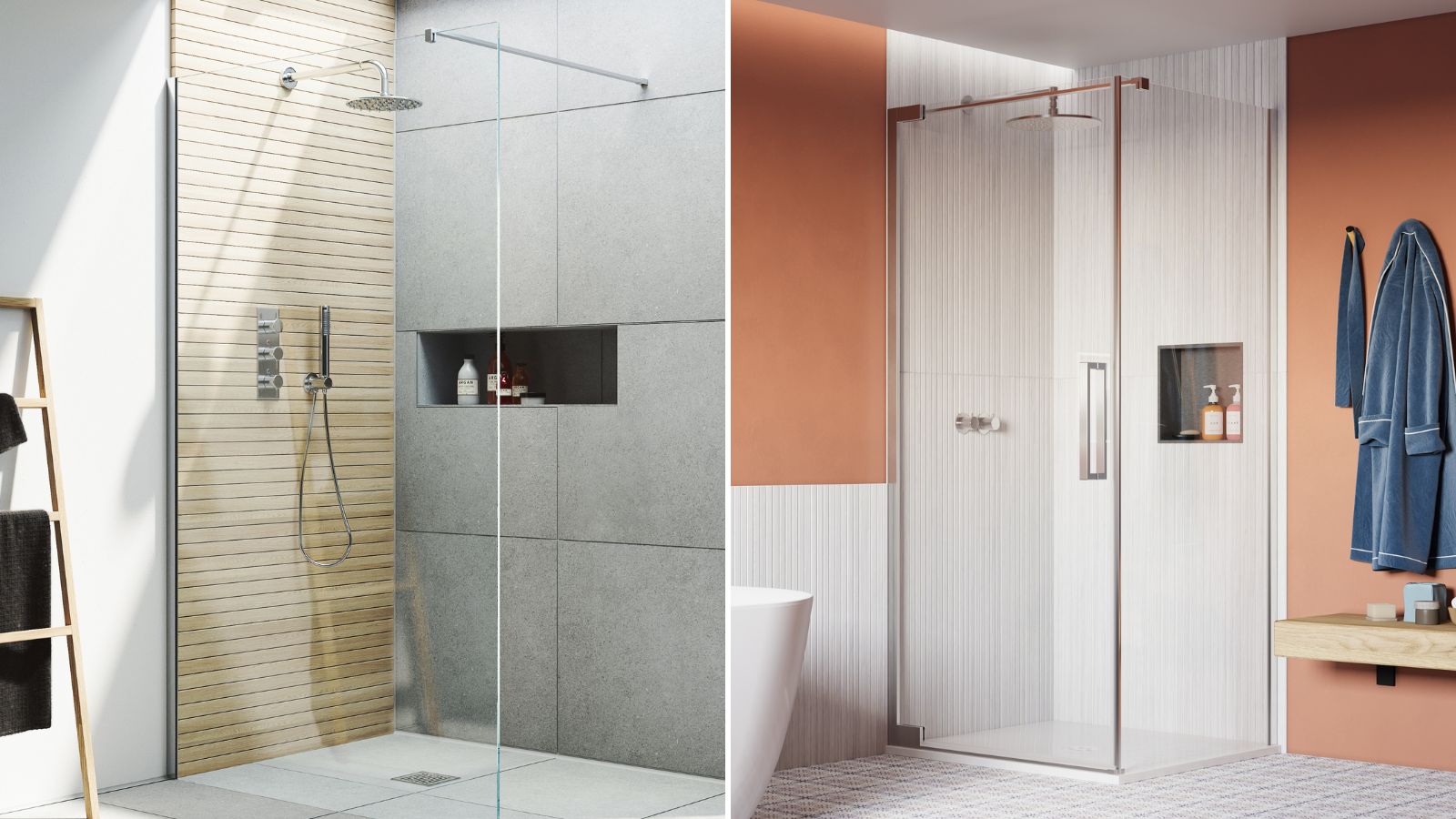
Are you unsure whether to opt for a wet room or walk-in shower? You're not alone – many homeowners face this dilemma when planning a bathroom upgrade. But how do you decide between the two?
Both options can create a stylish, modern space, but the decision isn’t just about looks. The right choice should suit your lifestyle, budget, and how you use your bathroom day to day. From the seamless, open plan feel of a wet room to the practicality of a walk-in shower, there’s plenty to consider. Installation, costs, and maintenance all play a role in determining which option will work best for your home.
To help you weigh up the pros and cons, we asked bathroom design experts to share their insights. Here’s everything you need to know to make the right choice for your home.
Wet room or walk-in shower – what is the difference?
Both wet rooms and walk-in showers can bring a fresh, contemporary feel to a bathroom, but the key difference lies in their design and how they define the showering space. While they may seem similar, the experience of each is quite distinct.
“A wet room is open plan,” explains Sally Bettison, design manager at Tissino. “It may have one screen in certain circumstances, however there are no doors and the shower’s drainage is ground-level with the rest of your bathroom rather than in its own sectioned-off space.” This creates a seamless flow between the shower area and the rest of the bathroom, with waterproofing across the entire room to keep it safe and functional.

Sally Bettison brings a unique blend of expertise to her role as Design Manager at Tissino, with a background in fashion technology and quality control. Having worked for prestigious brands such as Lowe Alpine, Boohoo.com, and Marks & Spencer, she combines her deep understanding of product development with an eye for innovation.
On the other hand, a walk-in shower still offers a minimalist aesthetic but keeps the showering area more defined. Nancy Emery, bathroom design expert at Drench highlights that “a walk-in shower will usually have one or two glass screens and a shower tray, which makes it a more defined area of your bathroom.” This shower enclosure setup allows for a more contained space, which is ideal for those who want a clear distinction between wet and dry areas.

Nancy has worked in the lifestyle sector for 17 years and is Drench's design and lifestyle expert.
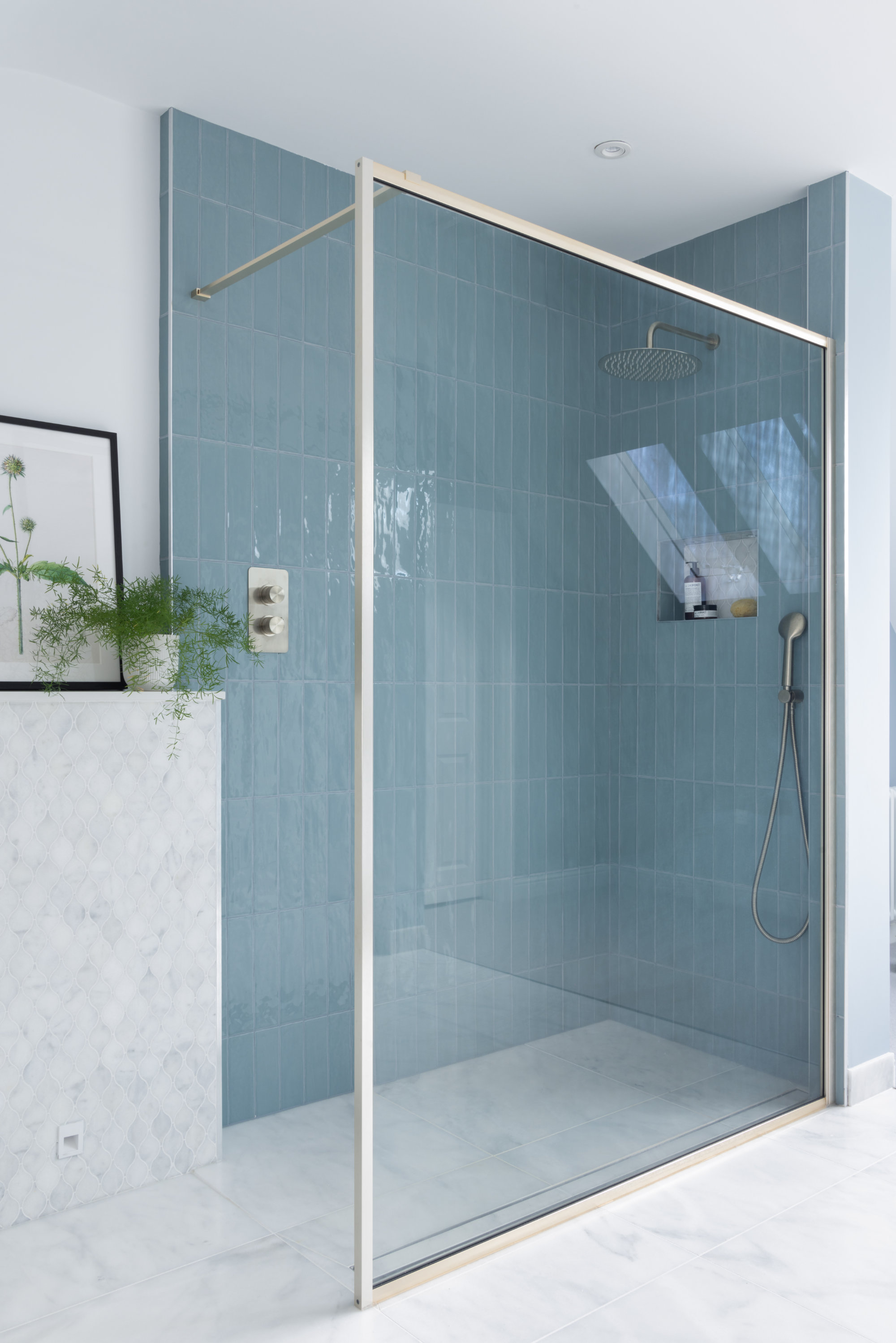
Which option is best for your bathroom layout?
Your bathroom layout and how you use the space will play a big role in determining whether a wet room or walk-in shower is the better fit for your home. Wet rooms are often seen as the ultimate in modern bathroom design, but they’re not the perfect choice for every home.
“A walk-in shower may work better for small bathrooms or those with families who prefer to have the option of a bath as well,” explains Shamila Iqbal, co-founder and director at Bathroom Mountain.

Shamila is the co-founder and director at Bathroom Mountain, an online retailer offering a complete range of bathroom essentials, from baths, sinks, and showers to radiators, taps and accessories.
Alternatively, for those with mobility needs, wet rooms offer a more accessible option. “Wet rooms are particularly well suited to ensuite bathrooms, modern flats, or as a safer, more accessible bathroom layout for people with mobility difficulties,” explains Nancy Emery from Drench.
“There can often be a misconception that wet rooms are indeed that – wet!” explains Louise Ashdown, head of design at West One Bathrooms. “But this isn’t the case, with most being designed to use some sort of shower screen or enclosure, so they aren’t any wetter than using a shower tray.”
“For those who love the idea of creating a large shower, with plenty of room to move about, or potentially even a double shower experience, wet rooms will always trump showers and enclosures,” concludes Sally Bettison.

Louise is the Head of Design at West One Bathrooms and brings over 18 years of experience to the role. As part of one of the UK’s leading luxury bathroom retailers, she leads the design and creative teams, overseeing all bathroom projects and carefully sourcing the latest products to ensure cutting-edge designs. Her dedication to bathroom design is unmatched.
In short, if you’re dreaming of a sleek, open-plan bathroom, a wet room is a great option. These units can also make a small space feel bigger by eliminating bulky enclosures. But for family-friendly functionality or a clear divide between wet and dry areas, a walk-in shower may be the better choice.
Three of the Best Wet Room Screens
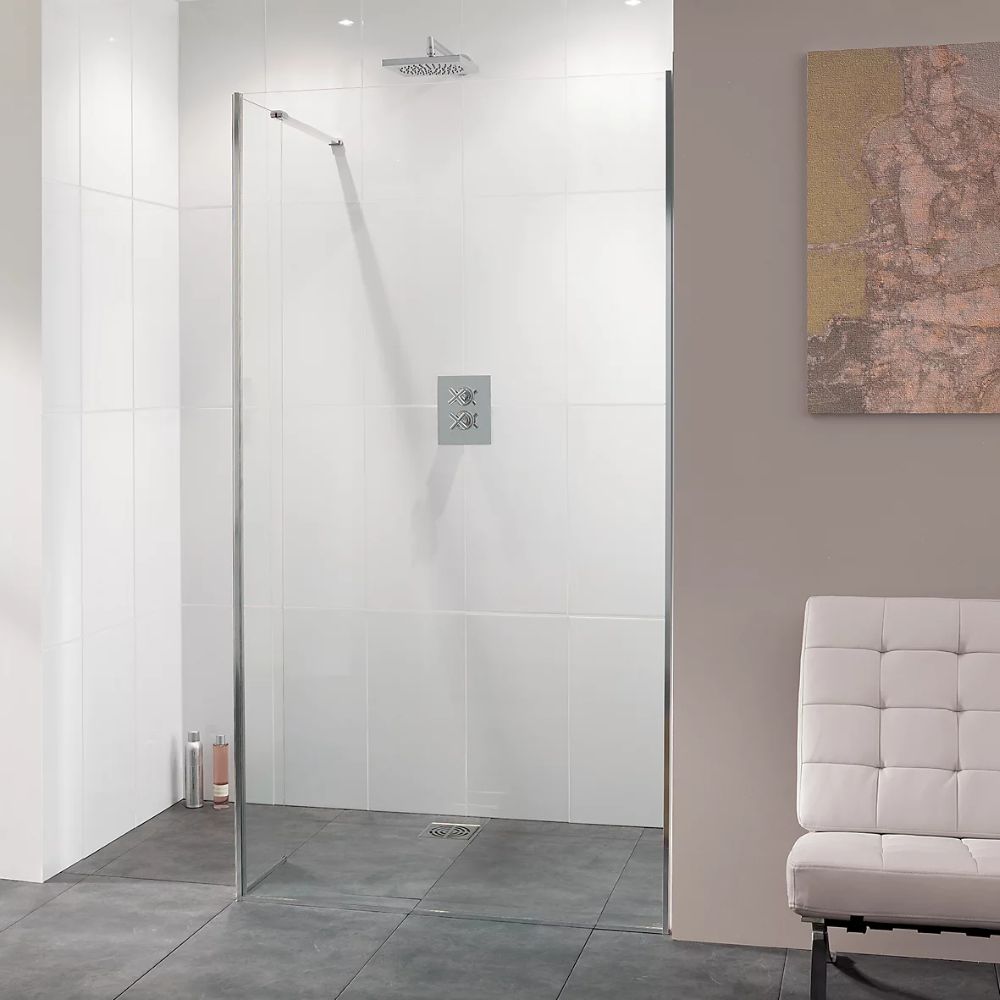
This sleek, frameless wet room screen in a silver finish offers a minimalist, contemporary look, standing at 2000mm high with 10mm toughened safety glass for durability.
What are the key differences in installation?
Installation is where the biggest difference between a wet room and a walk-in shower comes to light. While both options have the power to transform your bathroom, wet rooms typically involve more work to get right.
“A walk-in shower requires a shower tray and enclosure, making installation simpler and often more affordable,” explains Shamila from Bathroom Mountain. Wet rooms, on the other hand, need more preparation. “Wet rooms involve full waterproofing (tanking) of the entire space, and unless you are a seasoned DIYer, then professional expertise will be required for installation.”
Drainage is another key consideration. “To install properly, the floor of your bathroom will need to be altered to ensure water can drain away,” says Nancy Emery from Drench. This often involves creating a gradient in the flooring, which adds complexity.
All in all, walk-in showers are quicker and easier to install, thanks to the use of a shower tray and enclosure, while wet rooms require specialist waterproofing and drainage adjustments to achieve a high-quality finish.
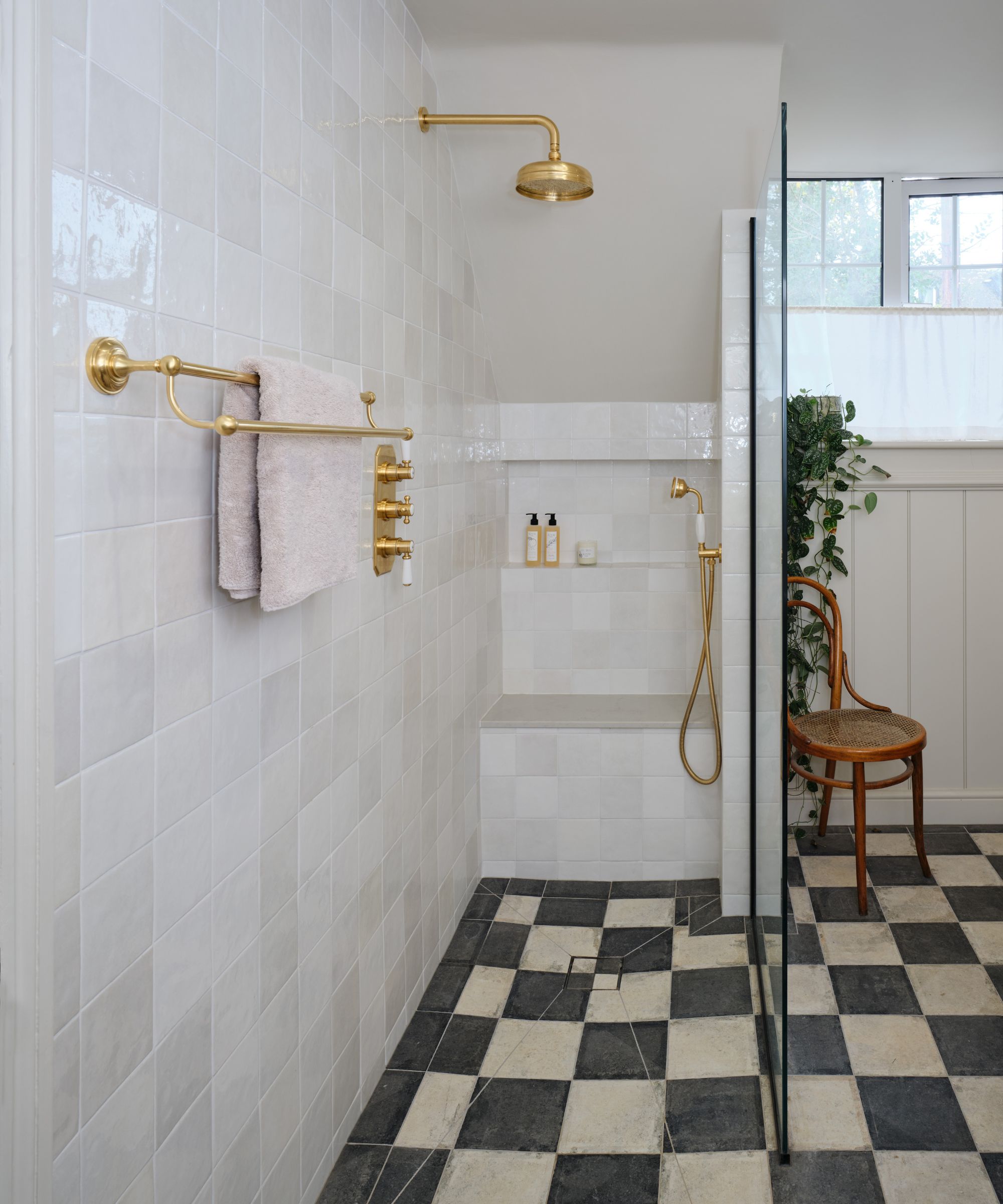
What are the differences in terms of costs?
Budget is often a deciding factor when renovating a bathroom. Wet rooms are undeniably luxurious, but they also come with a higher price tag compared to walk-in showers.
“If it is cost-driven, then a walk-in shower (with a shower tray) is almost always the most cost-effective option as it doesn’t require additional work like a wet room does, such as tanking,” explains Sally Bettison from Tissino.
As we've already covered, wet rooms involve not only waterproofing but also significant changes to the flooring and drainage, which can quickly increase costs. However, it’s important to think beyond the initial price tag. “While cost is a factor, there may be others that come into consideration, such as whether the bathroom is for multigenerational use,” says Barrie Cutchie, design director at BC Designs. He explains that wet rooms are more accessible and can accommodate features like seating or space for a wheelchair, which might make them a better long-term investment.

Barrie Cutchie founded British bathroom brand, BC Designs in 1999. He is an award-winning bathroom designer who has been at the forefront of the industry for over 30 years.
If you’re looking for a quick and cost-effective bathroom renovation, a walk-in shower is the more practical option. But if you’re ready to invest in a high-end finish, a wet room could be worth the extra effort.
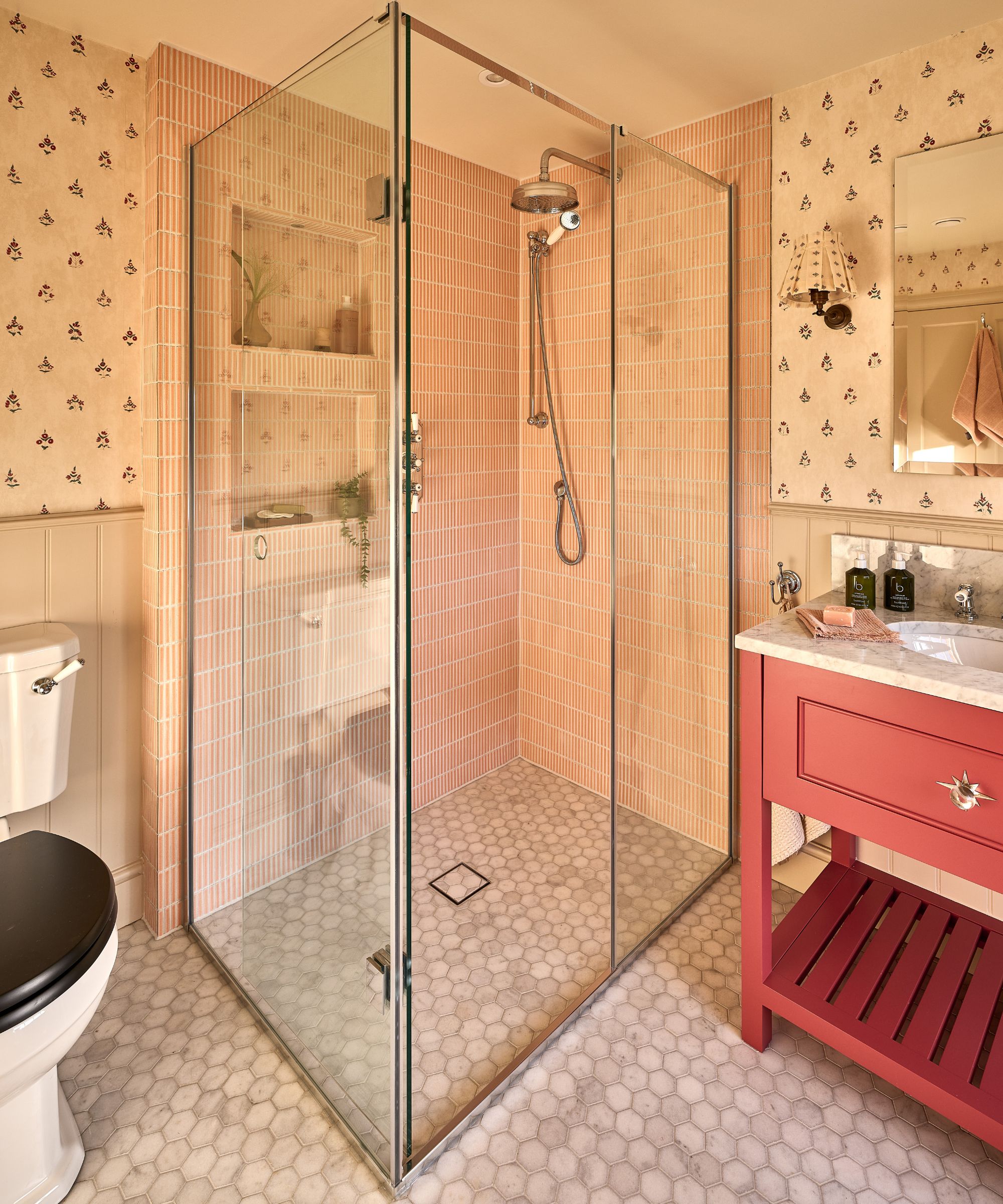
Which option is easier to clean and maintain?
Keeping your bathroom clean is just as important as making it look good, so it’s worth considering the maintenance needs of a wet room vs a walk-in shower.
“Wet rooms have fewer joins and no shower screens with runners or hinges, thus reducing areas where grime can build up, making them generally easier to clean,” explains Shamila from Bathroom Mountain. However, she adds, “they do require regular cleaning of the drainage to prevent blockages.”
On the other hand, walk-in showers may accumulate limescale, particularly in hard water areas. For wet rooms, the choice of materials can also impact how much cleaning is required. “Wet rooms should have tiles with a slip rating of at least R10, which makes them safer when wet,” says Grazzie Wilson, head of creative at Ca’ Pietra. “That will mean they tend to have texture or, if using a mosaic tile, lots of grout, which can make cleaning a little bit more difficult compared to a shower tray.”

Grazzie has worked in the interiors industry for more than a decade. At Ca’ Pietra, one of the UK’s leading stone and tile brands, she heads up creative, overseeing product collections as well as the company’s distinctive brand, look and feel.
Both options are easier to maintain than traditional shower enclosures, but the decision may come down to how much effort you’re willing to put into keeping your bathroom sparkling.
For more expert advice on how to choose a shower, make sure you read up on the differences between an electric vs mixer shower, as well as Homebuilding's guide to the best shower heads to revitalise bathroom.
Get the Homebuilding & Renovating Newsletter
Bring your dream home to life with expert advice, how to guides and design inspiration. Sign up for our newsletter and get two free tickets to a Homebuilding & Renovating Show near you.

Gabriella is an interiors journalist and has a wealth of experience creating interiors and renovation content. She was Homebuilding & Renovating's former Assistant Editor as well as the former Head of Solved at sister brand Homes & Gardens, where she wrote and edited content addressing key renovation, DIY and interior questions.
She’s spent the past decade crafting copy for interiors publications, award-winning architects, and leading UK homeware brands. She also served as the Content Manager for the ethical homeware brand Nkuku.
Gabriella is a DIY enthusiast and a lover of all things interior design. She has a particular passion for historic buildings and listed properties, and she is currently in the process of renovating a Grade II-listed Victorian coach house in the West Country.
